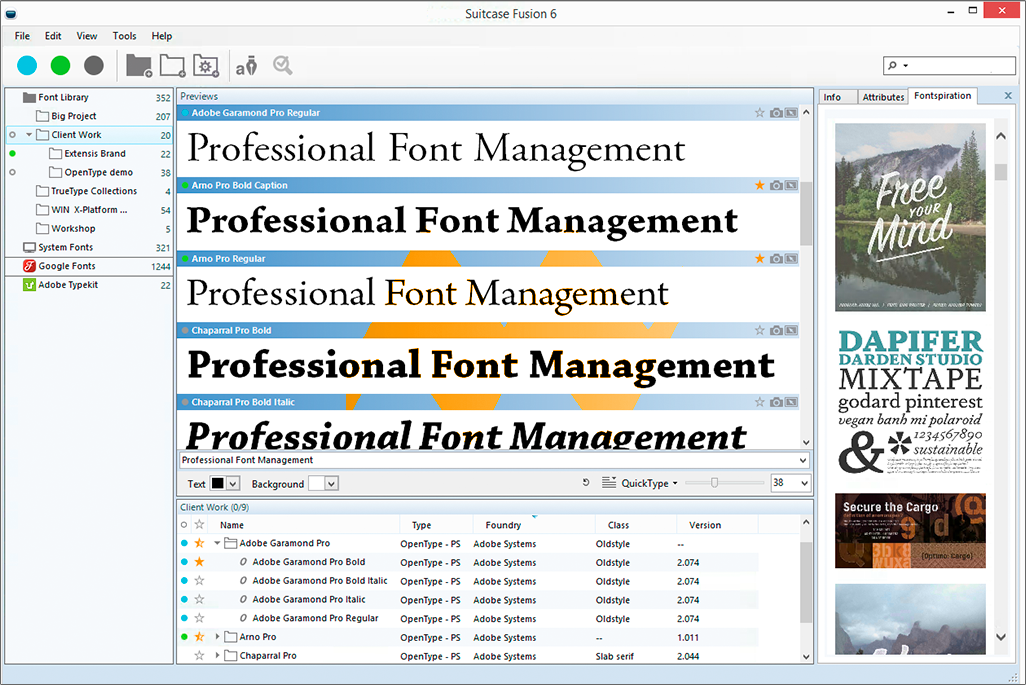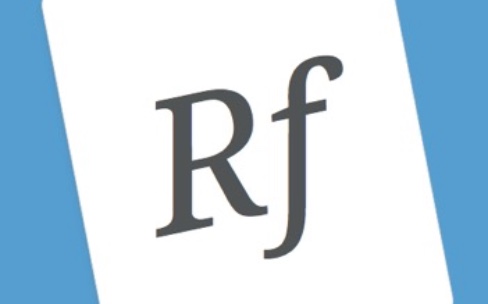


In addition, I’d like to see a plug-in that auto-activates fonts for Adobe Photoshop. This information would be helpful because I was often surprised and baffled at the fonts that were auto-activated. While Fusion does display a list of auto-activated fonts, it doesn’t indicate which application requested the fonts. These plug-ins can also deactivate fonts when you close the document or quit the application. Without those plug-ins font managers are basically guessing as to which version of a font was used. In addition, Fusion has special plug-ins for QuarkXPress, Adobe InDesign, and Adobe Illustrator that allow it to auto-activate the exact version of each font used, rather than guessing. If you open a document that uses inactive fonts, Fusion can automatically activate them. To accommodate them, Suitcase Fusion can also manage your fonts without copying them into the Vault. Suitcase Fusion adopted all of these technologies.īecause the Vault is a new concept for graphic designers, who are used to having direct access to their font files, some may be reluctant to use it. And, because the fonts are no longer scattered across your hard drives or network, it can’t lose track of them. The Vault will accept only one copy of any font, which prevents problems caused by duplicates.
#Suitcase fusion 3 yosemite code
Font Reserve accomplished this feat with three tricks: copying all your fonts into a database named the Font Vault identifying every font down to the bit level and building plug-ins for popular design applications that add a tiny bit of code to each document to identify the exact version of every font used. Extensis has preserved and improved this interface for Fusion.įont Reserve was developed from the ground up to meet the needs of publishing and prepress professionals who require precise identification of every version of every font, and rock-solid, reliable performance. I think I ran 8 computers through there, each of which had 3-7 different folders of fonts at up to 15,000 fonts in a folder)Īfter deleting corrupt fonts, updating types, merging families, fixing names, and deduping, I think I had one master folder of 34,000 fonts to distribute to all the computers.A huge number of graphic designers have used Suitcase for many years so its interface is not only familiar, it had been developed to suit their specific needs. We ended up buying Font Foundary (iirc) for them for its organizing, collecting, combining, and error checking. One of their biggest problems was they'd pass off a document to someone else and the font would change, because they didn't have one specific font on their computer as the author did.Īnd they had fonts that were TWO font-types back from current, I'm amazed they still worked at all. We were upgrading their computers and sooooo many fonts, scattered everywhere. One of my first big "on-site" jobs was to a newspaper. Go check out a newspaper or publisher's computer. (I remember one poster with 10k fonts, and I imagine that there are bigger libraries than that.) I'm always amazed by huge font libraries. I'm retired and don't need 2K fonts at my fingertips any more.


 0 kommentar(er)
0 kommentar(er)
